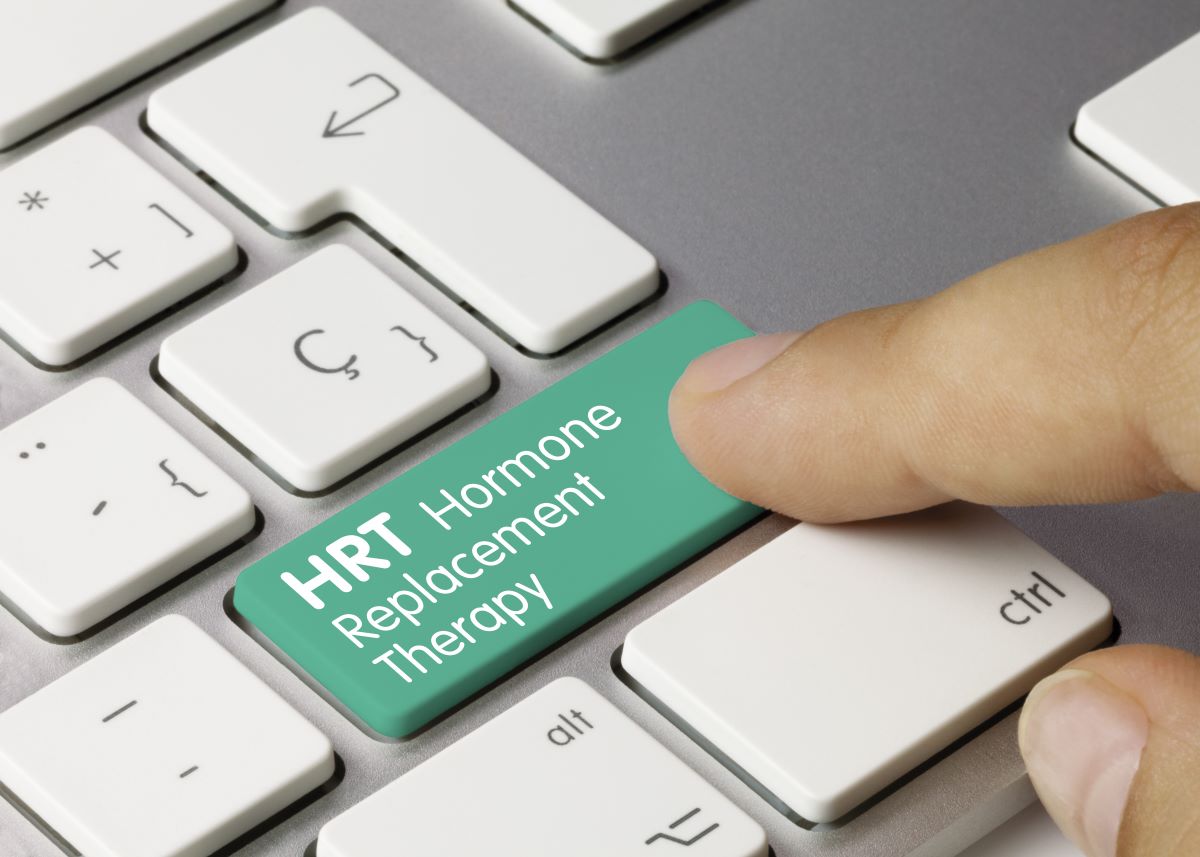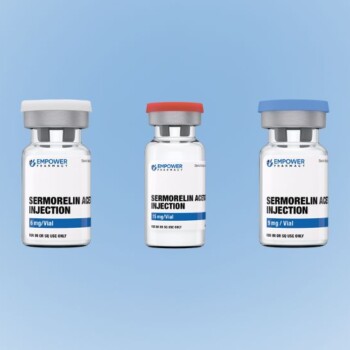Article Summary
Hormone replacement therapy (HRT) evolved as a key menopause treatment, with Oprah and Suzanne Summers advocating its benefits. Initially by James Bertram Collip in the 1930s, HRT peaked with Premarin in the 1960s. Scrutiny rose after the Women's Health Initiative in 2002. Now, HRT focuses on personalized dosages and monitoring for optimized benefits and minimized risks.Over the past several decades, hormone replacement therapy (HRT) has been concurrently at the forefront of medical science, and the focal point of public interest, while being effectively prepared and administered to millions of patients. While researchers and physicians have been making great strides in knowledge and treatment, Oprah has talked about it, Suzanne Summers has written about it, and Empower Pharmacy has provided HRT as a means to help patients get back on the road to good health and wellness.
In general, HRT is the method used to treat the symptoms of menopause and other hormonal imbalances in both sexes. However, HRT is most often spoken of (and will be so here) as female hormone replacement, which is traditionally contrasted with testosterone replacement therapy (TRT). Nevertheless, it should be made very clear that both HRT and TRT may be required by and administered to either gender. More specifically, custom HRT is a method of providing specific hormones (which often involves combinations of hormones) in the exact dosages required to meet a patient’s uniquely individual needs. The method by which hormones are customized is called ‘compounding’.[1]
In the 1930s, Canadian researcher, biochemist, educator, and co-discoverer of insulin, James Bertram Collip turned his attention to endocrinology.[2] It was during this decade that he pioneered the isolation and study of the ovarian and gonadotrophic hormones, more specifically by extracting estrogen from the urine of pregnant women. Although initially used to treat menopause symptoms such as hot flashes and vaginal dryness, by the 1960s Collip’s findings had captured the imagination of millions.
Since the 1962 introduction of Premarin, the first estrogen pill, manufacturers of sex hormones have generated a marketing and cultural suspicion that hormone replacement therapy may do more harm than good. Estrogen’s heyday started with a 1966 book for the masses, titled ’Feminine Forever’ by Manhattan gynecologist Robert Wilson whose strong financial ties to hormone makers gave him a biased perspective. The book shocked the world by calling menopausal women “castrates” if they didn’t take hormones. Through his nationwide tours, Wilson won women over with scientific-sounding promises of youth, beauty, and better sex. The U.S. Food and Drug Administration (FDA) banned Wilson from certain types of research for making such unsubstantiated claims. After the book, millions of postmenopausal women were taking the “Youth Pill” for all of life’s ills. Other books and magazine articles followed, pushing estrogen as a salvation for older women and suggesting that it might prevent cancer. Hormone manufacturers even produced films to educate doctors about hormone treatments, many of which contained utter misinformation, some of which persists today. All media forms falsely reported that hormones improved every woman’s quality of life. However, in the later part of the 1990s, a number of women were questioning the use of HRT. Some of the common questions that arose were: “Did all women need it?” and “Why were all women put on the same dose and not different dosages?” In 2002, the results of an extensive women’s study by the Women’s Health Initiative (WHI) looked at the effects of HRT (both Premarin and Prempro). Its findings overwhelmed the medical community by establishing that HRT in fact did not decrease a woman’s chances of getting heart disease, but rather definitively increased her risk of blood clotting, stroke, and breast cancer.[3]
Today we are far more knowledgeable regarding HRT diagnoses, and discerning which populations should receive and benefit from it. Lastly, unlike HRT of the past, modern day HRT administration is followed up by continuous monitoring and the repeated tweaking of hormonal levels to provide the necessary safeguards.
Produced by the major endocrine glands (pituitary, pineal, thymus, thyroid, adrenals, and pancreas) as well as within the sex organs, hormones are your body’s chemical messengers. They travel throughout the bloodstream to specific tissues and organs, where they work at varying speeds, inducing many different physiological processes central to which are: growth and development; metabolism; sexual functions; reproduction; and mood.
Furthermore, the male testes and the female ovaries produce largely gender-specific hormones, which perform an expansive range of functions. Collectively, these powerful chemicals are required in only miniscule amounts, yet incite major changes within cells, tissues, and organs throughout the body. The addition of too much or too little of a certain hormone can have serious consequences. For this reason, hormone therapy should only be conducted under physician supervision, after laboratory tests have been used to accurately measure the hormonal levels within your blood, urine, or saliva.
After puberty androgens, specifically testosterone, play a role in the regulation of the sex drive within both genders. Concordantly, deficiencies in testosterone or estrogen (as well as progesterone and DHEA which are also multi-faceted hormones) may cause a drop in sexual desire, whereas excessive amounts of these hormones may heighten sexual interest.[4]
Male-Specific Hormones
Testosterone is a hormone produced within the testicles via a joint process, which also includes the endocrine system and the pituitary gland. This system is collectively known as the Hypothalamic-Pituitary-Testicular axis (HPTA).[5] Testosterone serves as the male body’s primary natural hormone, and is largely responsible for the proper development of male sexual characteristics. Although often referred to as a sex hormone, testosterone actually governs several areas within the body including a man’s development from birth onward with responsibility for everything from initial structural gender differentiation, through pubertal changes and male potency (libido & sexual functioning), to the partitioning of bodily muscle and fat distribution.[6] It is also an integral component in men’s sense of well-being, playing a major role in male physiological, biological, and sexual health, while influencing stress coping capacity, sperm production, mental acuity (clarity, memory & recall, concentration & focus), bone density, immune system support, and red blood cell production.[7][8] Of course testosterone is present in both males and females; however, males typically produce between 4-7 mg per day, which is approximately ten times more than their estrogen-based female counterparts.
Female-Specific Hormones
Estrogens are the sex hormones produced primarily by a female’s ovaries that stimulate the growth of a girl’s sex organs, her breasts, pubic hair, and other secondary sex characteristics. There are three basic estrogens, namely estrone (E1), estradiol (E2), and estriol (E3), however progesterone (another female-centric hormone) is often considered an estrogen as well.[9][10] Collectively, these estrogens regulate a diverse array of chemically induced processes within the female body among which are the menstrual cycle, intercourse preparation and during intercourse functions, as well as impact mood, sleep quality, body fat levels, water retention, etc.[11] As with testosterone, estrogen is present with both genders; women produce appreciatively more at approximately 0.5 mg daily.[12] Aging, illness, and certain cancer treatments can adversely affect the body’s delicate hormonal balance, causing changes in sexual interest and functioning.[13] The most familiar of these changes occurs when a women go through menopause. Estrogen production drops throughout this process as women exit their child-bearing years.
However, in the majority of women, ovarian hormones don’t appear to play a significant role in their sex drive. A 2012 study published in the Journal of Obstetrics and Gynecology showed that ovaries, i.e. estrogen production, may not play a pivotal role in sexual ideation and function among older women.[14] This cross-sectional study involved analysis of 1,352 women (57 to 85 years of age) from the National Social Life, Health, and Aging Project compared women with previous bilateral oophorectomy (removal of one or both of the ovaries) with women who retained their ovaries. The primary outcome of interest was self-report of sexual ideation, chosen because having thoughts about sexual experiences is not prohibited by either a partner or a woman’s own physical limitations. Three hundred fifty-six (25.8%) women reported previous bilateral oophorectomy. Even after adjusting for current hormone therapy, age, education, and race, no significant difference in the report of sexual ideation was found between groups.[15]
How Hormone Replacement Works
Hormone replacement therapy is the method used to treat not only the symptoms of menopause, but all other hormonal imbalances as well. A hormone will only act on a part of the body if it ‘fits’, and can therefore be thought of as a type of ‘key’. Its target site (such as a cell) has specially shaped receptors which are analogous to ‘locks’ on their cell walls. If the key(hormone) fits the lock (receptor site), then the hormone will work by impacting the target site (cell), and altering the function of its tissue and/or organ. The primary affected glands include:
- Pituitary gland – inside the brain, oversees the other glands and keeps hormone levels in check. It can also bring about a change in hormone production somewhere else in the system by releasing its own ‘stimulating’ hormones.
- Thyroid gland – inside the neck, controls the rate of metabolism.
- Parathyroid glands – inside the neck surrounding the thyroid gland, control the level of calcium in the bloodstream.
- Adrenal glands – atop each kidney, make a number of different hormones, such as adrenaline and cortisol in times of stress, as well as sex hormones.
- Pancreas – inside the abdomen, an organ of digestion which makes insulin to control the amount of sugar in the bloodstream.
- Ovaries – inside the female pelvis, make female sex hormones like estrogen.
- Testes – inside the male scrotum, make male sex hormones like testosterone.
Some common problems of the endocrine system that may be addressed by HRT include: diabetes- too much sugar in the blood caused by problems with insulin production; premenstrual syndrome- symptoms include cramping, bloating, breast tenderness and mood swings; and thyroid problems- when the gland is overactive (hyperthyroidism) or underactive (hypothyroidism).
The endocrine glands receive feedback from the hypothalamus – a small but important part of the brain which contains several small nuclei with a diversity of functions. It plays an important role in both the nervous and endocrine systems. All vertebrate brains contain a hypothalamus, which in humans, it is roughly the size of an almond and located just below the thalamus and right above the brain stem. Linked to another small and vital gland called the pituitary gland, the hypothalamus controls certain metabolic processes and other activities of the autonomic nervous system by synthesizing and secreting neurohormones, often called hypothalamic-releasing hormones. These hypothalamic releasing hormones control and regulate the major endocrine glands (pituitary, pineal, thymus, thyroid, adrenals, and pancreas) as well as within the sex organs (male testes and female ovaries). Hormones are your body’s chemical messengers, they travel throughout the bloodstream to specific cells, tissues, and organs where they work at varying speeds inducing a wide range of homeostatic and other physiological processes central to which are:
- The release of 8 major hormones by the pituitary gland
- Growth and development
- Cellular repair
- Body temperature
- Hunger, thirst and food, and water intake
- Sexual behavior and reproductive functions
- Daily cycles in physiological state and behavior also known as circadian rhythm
- Mediation of emotional responses and mood
- Digestion
- Circulatory and respiratory function
The goal of HRT is to optimize function, prevent morbidity with aging, and to enhance quality of life. With proper modification, adjustment, and titration by an experienced anti-aging physician, the benefits of HRT far outweigh the risks. Anti-aging physicians remain steadfastly at the helm advancing hormone replacement therapy, thereby providing crucial research data to ultimately negate the controversy and confirm the safety and efficacy of HRT.
Restoring Hormonal Balance
Millions of women, from every age and background, experience some form of hormone-related health condition during their lifetimes. For many women, help comes in the form of hormone replacement therapy.
Hormones produced by our pharmacy have the exact same chemical structure as naturally occurring human hormones. Consequently, your body recognizes them and allows them to mimic the function of the hormones the body produces on its own. HRT may be useful for relieving the symptoms of a variety of conditions common among women of all ages, including:
- Menopause
- Premenstrual Syndrome (PMS)
- Irregular menstrual cycle
- Moodiness
- Hot flashes
- Infertility
- Post-partum depression
- Decreased libido
- Weight gain
- Endometriosis
- Fibrocystic breasts
- Vaginal Dryness
- Painful sexual intercourse
- Sleep disturbances
- Night sweats
HRT replaces deficient hormones with those that are chemically identical to those that the body naturally produces, but which have declined due to aging or illness.[16] HRT has improved the quality of life for millions of women and men who suffer from hormonal imbalance.[17][18][19] The ideal process for achieving hormonal balance includes: an assessment of hormone levels: complete evaluation of signs and symptoms; replacement of the deficient hormones in the most appropriate dose via the most effective route; and the monitoring to fine tuning of therapy.[16] Estrogens, progesterone, and androgens are just the tip of the iceberg when it comes to achieving hormonal balance. Thyroid and adrenal function, as well as nutritional status, should also be evaluated and treated when indicated.
The uniqueness of each person makes it incumbent upon health care professionals and patients to work together to customize hormone therapy. Through this cooperation, hormones can be compounded in the required strengths and dosages, and administered via the most appropriate preparation to best meet each individual’s needs.
- United States Pharmacopeia, Chapter 795. Pharmaceutical Compounding-Nonsterile Preparations. Revision Bulletin, Official January 1, 2014. http://www.usp.org/sites/default/files/usp_pdf/EN/gc795.pdf
- Historica Canada, People, James Bertram Collip 2008 July. Bliss M. http://thecanadianencyclopedia.com/en/article/james-bertram-collip/
- Int J Fertil Womens Med. 2003 May-Jun;48(3):106-10; discussion 137-8. Impact of WHI conclusions and ACOG guidelines on clinical practice. Gass M.
- Hayes L et al. “Diurnal Variation of Cortisol, Testosterone, and Their Ratio in Apparently healthy Males”. Sport Spa;9(1):5-13.
- The Mayo Clinic Mayo Foundation for Medical Education and Research ‘Male hypogonadism’ http://www.mayoclinic.com/health/male-hypogonadism/DS00300/DSECTION=causes
- Kucinskas L, just W. “Human male sex determination and sexual differentiation: Pathways, molecular interactions and genetic disorders”. Medicina. 2005;41(8):633-640.
- Beauchet O. “Testosterone and cognitive fucntion: current lcinical evidence of a relationship”. European Journal of Endocrinology. 2006;155:773-781
- Isidori AM, Giannetta E. Effects of testosterone on body composition, bone metabolism and serum lipid profile in middle-aged men: a meta-analysis”. Clinical Endocrinology. 2005;63:280-93.
- “Menopause”. Fact Sheets. nebraska Department of Health and Human services, Office of Women’s and Men’s Health.
- “Menstruation and the Menstrual Cycle”. Fact Sheets. U.S. Department of Health and Human SErvices, Office on Women’s Health. 21 Oct 2009.
- Miller M, et al. “Theoretical basis for the benefit of postmenopausal estrogen substitution.” Experimental Gerontology. 1999;34:587-604.
- Smith P. “A Comprehensive Look at Hormones and the Effects of hormone Replacement”.What You Must Know About Women’s Hormones: Your Guide to Natural Hormone Treatment for PMS, Menopause, Osteoporosis, PCOS, and More. Square One Publishers. 28 Nov 2009: Chapter 41.
- Obstet Gynecol. 2012 Oct;120(4):833-42. Sexual function in older women after oophorectomy. Erekson EA, Martin DK, Zhu K, Ciarleglio MM, Patel DA, Guess MK, Ratner ES.
- Erekson E, et al. “Sexual function in older women after oophorectomy”. Obstetrics and Gynecology. Oct 2012;120(4):833-42.
- Obstet Gynecol. 2012 Oct;120(4):833-42. Sexual function in older women after oophorectomy. Erekson EA, Martin DK, Zhu K, Ciarleglio MM, Patel DA, Guess MK, Ratner ES.
- J Clin Endocrinol Metab. 2012 Mar;97(3):756-9. Misconception and concerns about bioidentical hormones used for custom-compounded hormone therapy. Bhavnani BR, Stanczyk FZ.
- Miller M, et al. “Theoretical basis for the benefit of postmenopausal estrogen substitution.” Experimental Gerontology. 1999;34:587-604.
- Want C, Alexander G, et al. “Testosterone replacement therapy improves mood in hypogonadal men–a clinical research center study.” Journal of Clinical Endocrinology & Metabolism. Oct 1996;81(10):3578-83.
- Bhattacharya RK, Khera M, et al. “Effect of 12 months of testosterone replacement therapy on metabolic syndrome components in hypogonadal men: data from the Testin Registry in the US”. BMC Endocrine Disorders. 2011;11(18).




